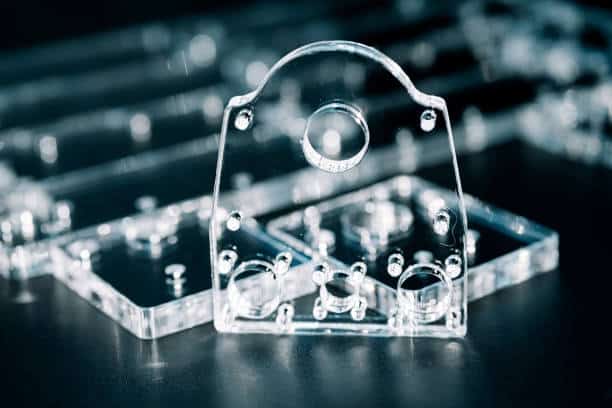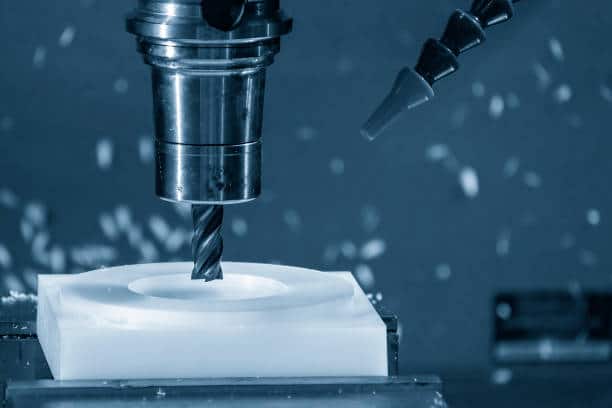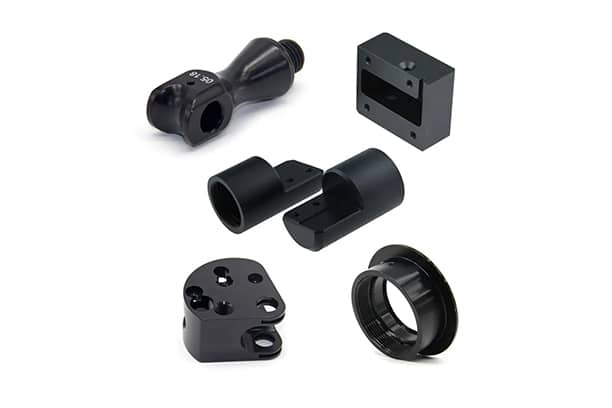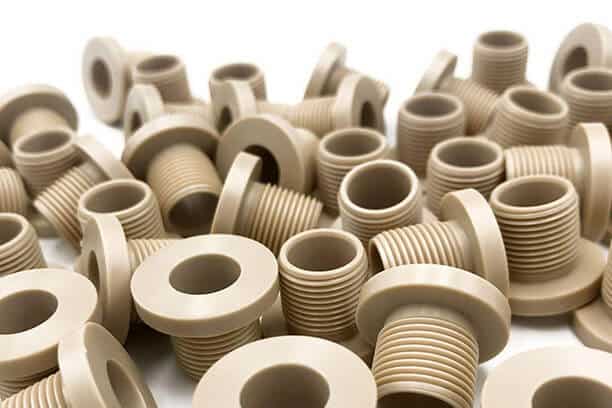Acrylic, or Polymethyl Methacrylate (PMMA), is a clear and transparent polymer established as a glass substitute. This plastic is one of the most extensively used clear plastics employed in CNC systems. CNC machining creates a balance between force and fragility, making it possible for manufacturing acrylic parts with excellent strength, durability, precision, and high performance.
This article serves as a complete guide to CNC acrylic, providing insights into how and why CNC acrylic, suitable CNC processes, and best tips for acrylic machining, how to properly ensure acrylic, available surface finishes and applications for CNC acrylic parts.
What Is CNC Machining Acrylic?
CNC machining acrylic is an accurate manufacturing technique allowing for the precise cutting of acrylic plastic with minimal force, resulting in the swift and efficient production of precisely-shaped acrylic components. This process reduces waste, enhances accuracy and quality, and aids in achieving better dimensional tolerances for better long-term performance.
CNC mills and lathes can both be used to cut acrylic, with lathes typically used for softer materials such as aluminum, plastic, wood, and foam, and milling machines offering more precision with harder materials like metal and high-performance plastics. CNC milling machines are particularly effective for cutting acrylic due to their multi-point cutting tool and range of angles available for increased precision. Many engineers opt for CNC milling to achieve optimal handling strength in acrylic components.
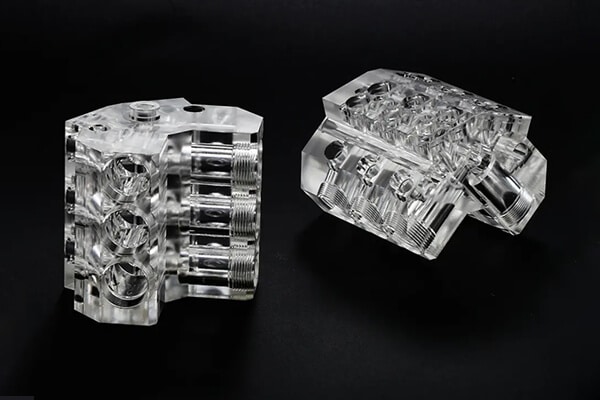
Overview of Acrylic
What Is Acrylic?
Acrylic, a thermoplastic material, commonly known as Polymethyl Methacrylate (PMMA), can be melted and altered without losing its fundamental characteristics. Unlike other clear plastics, this material does not discolor even after prolonged exposure to sunlight. Additionally, it’s lighter and more resilient to impact than glass, although it is not suitable for high-temperature applications.
Acrylic is a UV-stable, optically clear, lightweight, durable, and stiff plastic, making it an ideal substitute for glass in a variety of applications. Acrylic machining is commonly used in the automotive and test and measurement sectors.
Properties of Acrylic
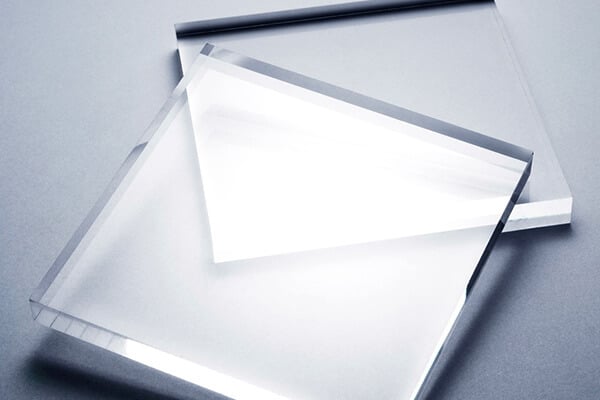
Acrylic is a material that possesses attributes similar to those of glass. Its characteristics include transparency, clarity, and translucency. It is regarded as one of the most durable materials used in manufacturing and has a lower chance of sustaining damage. Some distinct properties of acrylic are as follows:
- UV radiation resistance. Acrylic has high resistance to UV radiation. Most CNC acrylic designs take into account the requirement for UV stability when subjected to sunlight. This characteristic makes acrylic an excellent option for outdoor applications, especially those exposed to the open air.
- Chemical resistance. Acrylic is highly resistant to chemical corrosion, as it won’t be easily affected by most aqueous solutions of laboratory chemicals. One can apply cleaners, alkalis, detergents, dilute inorganic acids, and other substances to acrylics without the risk of damaging them.
- High harness. Acrylic is a tough, lightweight, and long-lasting thermoplastic. Its density varies between 1.17 g/cm3 and 1.20 g/cm3. It has superior scratch resistance when compared to other transparent polymers. Moreover, acrylic offers remarkable dimensional stability, which confers to it a low capacity for water or moisture absorption.
- Transmittance. The acrylic polymer has a refractive index of 1.49, allowing it to transmit up to 92% of the light that passes through it. This light transmittance is greater than that of glass and other plastics. As a result, it is possible to produce customized acrylic plastics while maintaining optical clarity. In addition, it’s ideal for use in most outdoor applications due to its environmental stability.
Types of CNC PMMA Operations
Acrylic is well-suited for processing through various machining methods. The fabrication of acrylic may involve employing one or several of the following techniques, depending on the desired product design.
CNC Acrylic Milling
This process involves rotating multi-point cutting tools to remove excess material from the acrylic sheet. In this method, the machine feeds the workpiece to the cutting tool in the same direction as the cutting tool rotation. This differs significantly from manual milling, where the machine feeds the workpiece in the opposing direction to that of the cutting tool.
Acrylic CNC milling has a range of operational capabilities, such as deep cutting, shallow cutting, and peripheral milling, among others. This option provides higher throughput and superior accuracy, and promotes integration with numerous programs. However, the downside is that it necessitates a high degree of attention to detail for optimal outcomes.
CNC Acrylic Turning
CNC acrylic turning is a machining process where a spinning single-point cutting machine performs the material removal from a rotating acrylic workpiece. This method produces cylindrical parts with internal and external features and employs grooving, thread cutting, facing, and boring. This machining process delivers a high degree of accuracy, although it requires sophisticated equipment.
CNC Acrylic Drilling
CNC acrylic drilling employs multi-point drill bits to generate cylindrical holes in the acrylic material. The CNC tool feeds the rotating drill bit perpendicular to the surface of the acrylic sheet, creating vertical holes with diameters equal to the size of the bit applied.
Angular drilling operations can also be conducted through the use of specialized machine configurations and work-holding instruments. CNC drilling can perform multiple operations including reaming, tapping, countersinking, and counterboring. While this option is easy to execute and relatively efficient, it often produces poor surface finishes.
CNC Acrylic Engraving
CNC acrylic engraving is a computerized machining method that adds designs, symbols, artwork, or markings onto acrylic products. The automated equipment can rapidly and precisely engrave a product, ensuring consistent results each time.
Acrylic CNC engraving often offers high accuracy and reduces the likelihood of damaging the workpiece. Moreover, it requires no workholding. Nevertheless, the equipment it used is expensive.
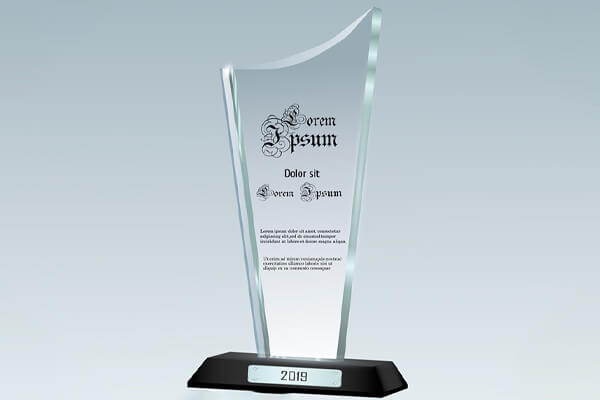
CNC Acrylic Cutting
CNC acrylic cutting is a machining process that involves the direct cutting of an acrylic workpiece through contact with the cutting device. The computer programs determine the path of the cutting tool, while the machining itself is carried out manually. This implies that handheld devices are automated in CNC cutting acrylic.
This machining process involves applying the command to the CNC control equipment, which performs automatic cutting via the specified program. These options are relatively cost-effective and are frequently used in educational institutions and small businesses. As it cuts quite rapidly, it is critical to have an ideal CNC system to ensure high-quality cuts.
Tips for CNC Machining Acrylic Parts
CNC machining in acrylic can prove to be an excellent choice for a broad range of possible applications with its versatility. However, to ensure successful manufacturing, there are some crucial factors to consider.
Here are some tips that can facilitate smooth finishing results when using CNC machining with acrylic materials.
1. Select the right acrylic material
When working with CNC mills or CNC lathes to cut acrylic, selecting the appropriate material is critical. Different types of acrylic vary in degrees of transparency, melting points, rigidity, and other properties. Acrylic’s versatile attribute makes it suitable for a broad range of CNC machining processes.
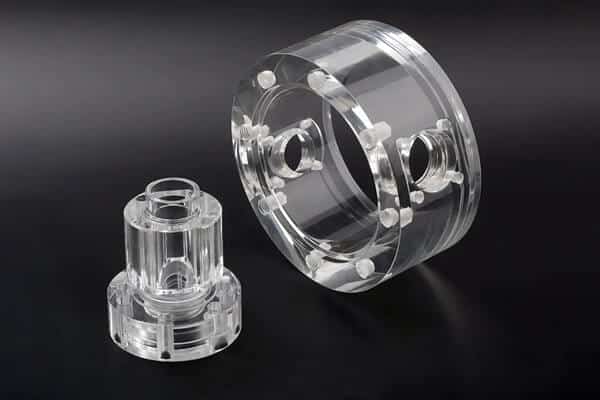
For optimal results, it is recommended to consult professional manufacturers like Runsom Precision, who can offer their expertise in identifying the ideal type of acrylic that suits your specific projects.
2. Determine the correct cutter
To successfully cut acrylic using CNC machines, it’s important that the edges of the machine are sharp and robust. This is necessary to avoid the melting of acrylic during the cutting process, which can have a negative impact on both appearance and functionality. Cutters that have been previously used with metal must be avoided as they may have jagged edges. The use of smooth and sharp cutter edges can also help in achieving smooth surface finishes.
The cutter material is an essential factor to consider when cutting acrylic with CNC machines. While high-speed steel is capable of cutting acrylic, the surface finish it produces may be poor. While diamond cutters can provide an improved surface finish, they are also particularly expensive. Carbide is often preferred for CNC cutting of acrylic materials.
Specialized cutters often feature a single flute to maximize chip clearance. The single flute is also useful for preventing heat buildup in the material. Fewer flutes, however, can help reduce the risk of catastrophic failure when chips become trapped.
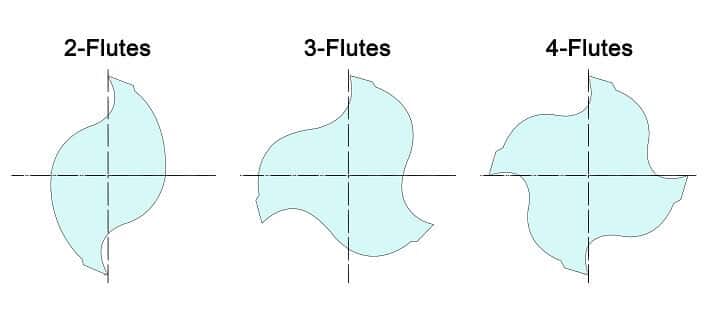
The table below offers a comparison when using end mills with more flutes and fewer flutes.
| More Flutes | Fewer flutes | |
| Heat | More | Less |
| Feed rate | Higher | Lower |
| Tool rigidity | Higher | Lower |
| Surface finish | Better with fewer burrs | Rougher with more burrs |
In addition to the above considerations, recommended cutting edge rake angles of 5 degrees and clearance angles of 2 degrees are advised for CNC machining acrylic components.
3. Choose the correct bits
Selecting the right material for your drill bit is critical to effectively making holes in acrylic. Carbide is a highly effective material for acrylic drilling, and many manufacturers prefer O-Flute End Mill Bits that are purpose-designed for cutting and drilling acrylics. Moreover, ensure that your drill bits remain sharp since dull bits often result in poor quality edges and can cause stress cracking and crazing.
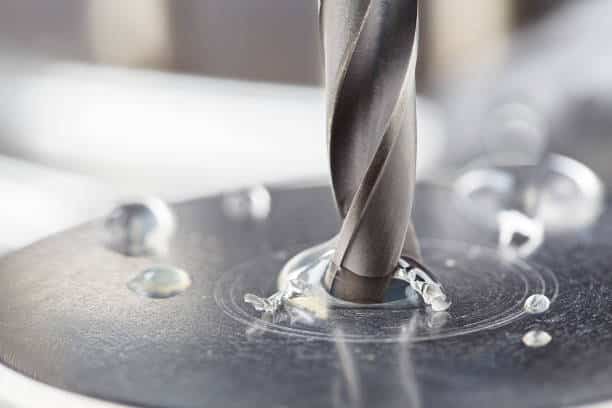
4. Secure the acrylic properly
Machining acrylic requires precision and attentive operations. Ensuring that the acrylic is secured appropriately to the machine is of great significance, as failure to do so could result in excessive vibrations, eventually ruining the quality of the final product.
5. Notice the ramp feature
Using a ramp with your bit is preferable in CNC acrylic. To avoid any damage to the acrylic surface, gradually move your bit downwards in a smooth ramping motion rather than plunging directly. This technique results in better protection against potential damage and contributes to achieving smoother finishing results. A smooth ramp between 1 to 3 inches can achieve an optimal result.
6. Keep right pass depth and cutting direction
To ensure desired results when cutting with CNC machines, the ideal pass depth for most materials is half the diameter of the bit. For some materials, a pass depth of 0.0625″ may be preferable for achieving the best results.
The direction of the tool is just as vital as the cutting depth in the acrylic CNC machining process. As such, it’s necessary to understand the direction of the CNC cutter’s rotation or spin, including whether it is rotating to the left or right, or clockwise or counterclockwise. This knowledge is essential to achieve precise design features.
7. Set the correct feed rate
Appropriate feed rate setting is crucial in CNC acrylic machining. To avoid the melting of acrylic, it is recommended to use faster feed rates. However, the highly fast feed rate may result in excessive cutting pressure and then cause acrylic parts to break. It can also lead to dislodged parts from the workholding or blemishes on the part surface. Conversely, slower feed rates may produce parts with incorrect dimensions or unfinished, rough surface finishes.
Deciding on the best feed rate for a project depends on the type of acrylic material selected as well as the geometry of the component.
8. Set the right RPM
The RPM (revolution per minute) and feed rate settings are interrelated and must be adjusted according to the type of acrylic being used. If a faster RPM is chosen, then a corresponding increase in feed rate is necessary to avoid the risk of material melting. The correct correlation between these settings will aid in creating optimal results.
How to Fix Acrylic Parts Properly For Machining Operations?
Properly fixing the workpiece on the machine is essential for achieving the desired quality of the final product. Vibrations occur during the machining process, and insufficient clamping can ruin the entire procedure. The approach to clamping the workpiece relies on factors like its blank size and the type of machining required.
Although acrylic is rigid, it is still plastic, which requires long or large sheets to be clamped tightly along the entire area. Small acrylic parts can be clamped using jigs and vises, while longer or larger pieces typically require gluing or taping to the working table. A vacuum hold table is recommended if you plan on frequently machining acrylic sheets since it clamps and releases the material with precision.
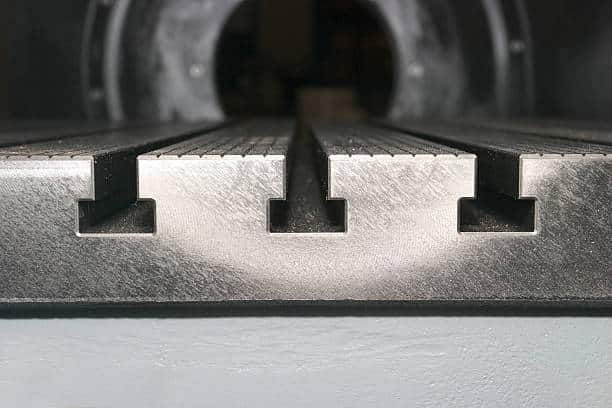
Adequate clamping enhances work efficiency and maintains product quality. At Runsom Precision, we use modern machines for acrylic machining, enabling precise results. We can customize acrylic parts to meet our client’s requirements.
Available Finishing for Machined Acrylic
After completing the required precision and shape of the acrylic parts, post-processing operations are typically used to improve their mechanical properties and functional performance. These are some of the finishing techniques suitable for CNC machined acrylic parts.
- Polishing is the most common approach for finishing acrylic parts. It enables the removal of visible marks from the surface of the workpiece, providing a glowing appearance that signifies a well-polished part.
- Texture finishing is also an extensively employed method for post processing CNC machined acrylic parts. Texture finishing typically uses sand spray to produce various textures.
- Flame polishing is the method to make acrylic parts a clear and shiny surface. However, it has some disadvantages. One potential issue is that it incurs tension in the material, which can potentially cause cracks in the workpiece.
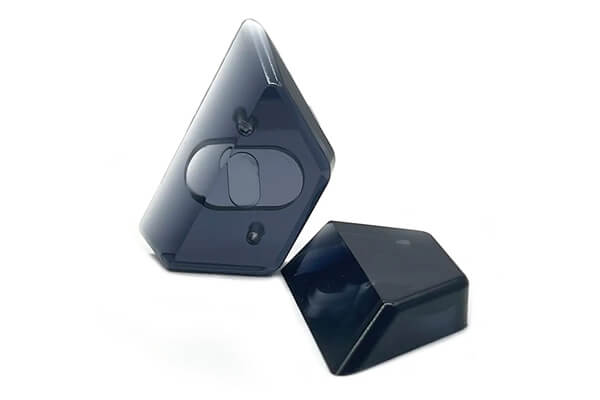
Ways to Avoid Acrylic Melting During CNC Machining
Acrylic melting is caused by the surface temperature exceeding the material’s melting point. Several recommendations to avoid acrylic melting are provided below:
- Maintain a consistent cutting rate. It can help avoid the occasional melting of the workpiece at certain points during the process. The increased IPM allows the cutter to separate from the material when there is no need for longer contact. Cut at a steady but quick pace to maintain control.
- Use larger bit sizes. Larger cutter sizes tend to be better suited for removing plastic chips. They can cut the material more quickly while preventing melting caused by friction. A 0.25-inch bit is typically appropriate for most acrylic types, or choose the largest size that meets the component requirements.
- Use higher feed rates. Setting high feed rates helps cut through the material faster while keeping the RPM relatively consistent. Keeping the appropriate temperature of the acrylic workpiece is also beneficial.
- Cool the acrylic. Keep the acrylic at a cool temperature to prevent material re-bonding. Try freezing the acrylic before cutting it to reduce the starting temperature, or use a cool mister on the plastic and blade intermittently to lower the temperature.
Benefits of CNC Machining for Acrylic
CNC technology has become crucial to modern acrylic machining methods and provides benefits over traditional techniques. In this part, let’s take a brief look at some of the advantages CNC confers to acrylic fabrication.
1. Precision and accuracy
CNC machining offers higher precision along with a shorter cycle time, allowing for the production of acrylic parts with high accuracy. Parts with an accuracy of approximately 0.001″ to 0.005″ can be achieved by a typical CNC router that enables the exact machining of intricate acrylic products.
2. Lower manufacturing costs
CNC machines enable to full utilize all of the raw materials used in the acrylic sheet fabrication process. The precision CNC machines offers allows for minimum waste. Additionally, increased productivity results enhance efficiency and profitability.
3. Automation
CNC machining automates the fabrication of acrylic products, which is perfect for producing mass quantities. CNC machines read a design file and translate it into G-codes, which control the cutting tool to perform the necessary operations. G-codes include other codes that regulate miscellaneous activities like controlling the spindle and delivering cutting fluid.
Automated machining is ideal for large-scale production that demands repeated operations because it reduces the need for human intervention. This automation doesn’t suffer from human limitations like fatigue, allowing for uninterrupted acrylic product production. It turns out to be a more time-saving and productive result.
4. Stable replication and quality output
CNC machining makes it possible to control diverse parameters and utilize various cutting tools, so it’s ideal for manufacturing acrylic stocks of varying sizes and types. Employing an adaptive tool path and optimizing the machining parameters enables clean cuts with a minimal likelihood of errors. Consequently, CNC machining produces high-quality acrylic workpieces that surpass traditional machining processes.
Applications of CNC PMMA Parts
CNC machined acrylic (PMMA) parts are commonly applied across a broad range of industries. There are various applications surrounding you in your daily life. Thus, let’s take a look at some of the typical applications of CNC acrylic parts.
Rapid prototyping
Acrylic has become a popular material for developing prototypes due to its affordability and sustainability. Manufacturing industries employ acrylic for rapid prototyping through subtractive machining techniques like CNC machining.
Glass alternative
Its exceptional transparency makes acrylic an ideal substitute for glass across multiple industries, such as automotive, aerospace, and optical. PMMA is specifically utilized for intricate headlamp development in the automotive sector. High-quality eyeglass lenses are created using acrylic as well.
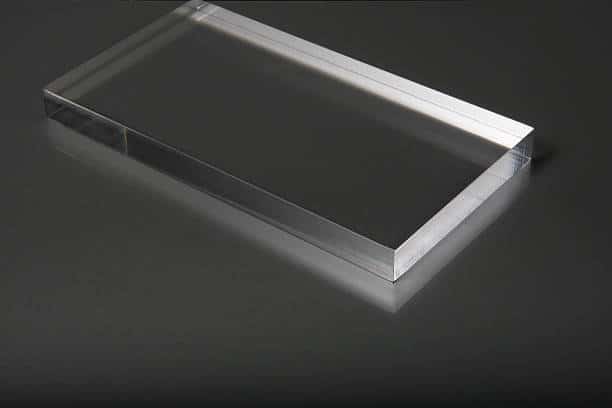
Medical
The ability of exceptional biocompatibility makes acrylic highly suitable for different medical applications. It is used as an under-skin filler in cosmetic surgeries and fillings for dental cavities, and can also serve as bone cement in orthopedic surgeries.
Electronics and lighting
Acrylic has superb light transmission properties along with excellent scratch resistance and a transparent appearance. Consequently, acrylics function widely across various electronic equipment.
Moreover, with its optical properties and transparency, acrylic is ideal for lamp construction, enlarging the light-emitting capability of LED lights.
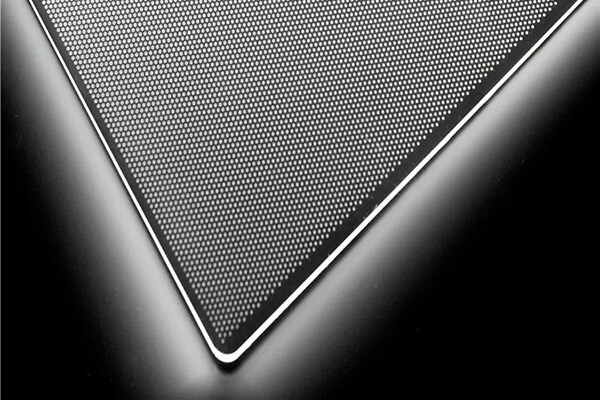
Automotive
Acrylic sheets are extensively used for designing various automobile components, such as motorcycle windshields, car windows, panels, and fenders. Colored acrylic sheets make ideal options for various car parts like interior and indicator light covers. Acrylic sheets are preferred by car manufacturers due to their exceptional formability and surface hardness.
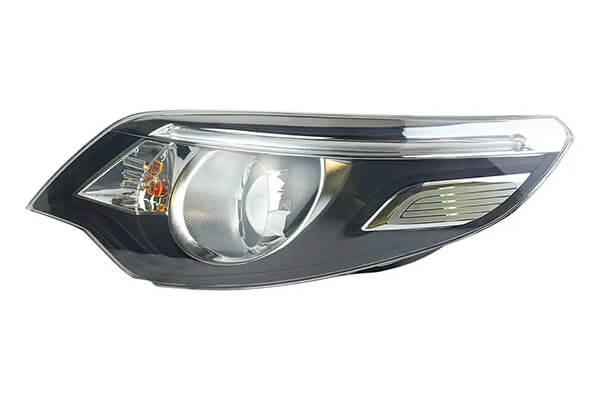
Conclusion
This article comprehensively explored acrylic machining. Acrylic is an exceptional material that works effectively with CNC systems, offering various machining possibilities. This writing directed readers through the benefits and available processes of CNC acrylic, along with providing tips for the best possible results. We hope you can have a comprehension regarding acrylic machining.
Custom CNC Machined PMMA Parts – Rely On Runsom Precision
At Runsom Precision, our expertise lies in proficiently sculpting and cutting acrylic materials through the use of the latest CNC machining technology. We can also assist in selecting the ideal acrylic type suitable for your specifications and applications and deliver you the best results. Feel free to contact us directly or request an instant quote for your CNC machining acrylic project.
Other Articles You May Be Interested in:

